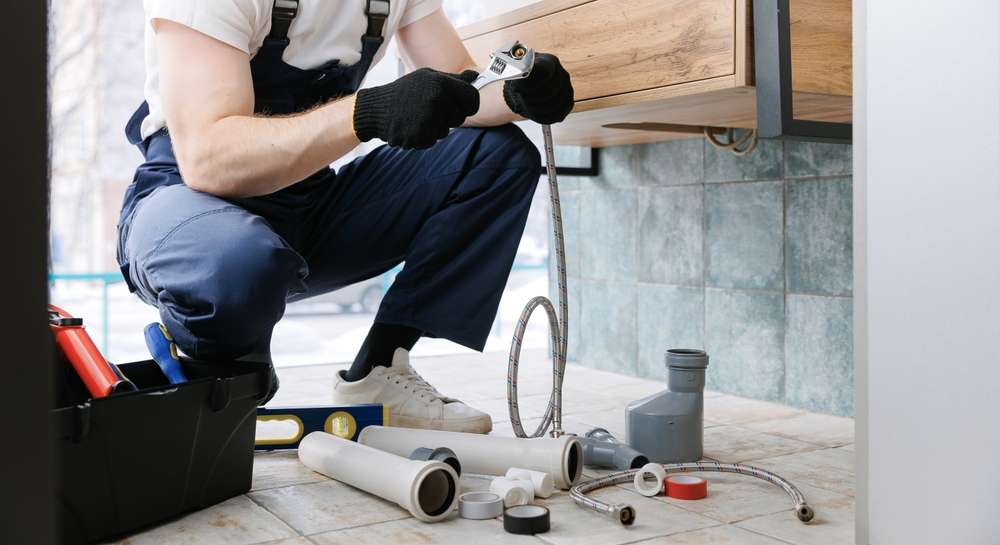Plumbing Career Path: Essential Training Guide
Discover the path to a fulfilling plumbing career through comprehensive training programs. From apprenticeships to trade schools, learn how to build a strong foundation in this essential trade. Explore the skills, education options, and career prospects that make plumbing an attractive choice for those seeking a stable, hands-on profession with growth potential.

Embarking on a Plumbing Career: Training Essentials
The plumbing industry offers a robust career path for those seeking a hands-on profession with steady demand. To succeed in this field, proper training is crucial. Let’s explore the key aspects of plumber training and how it can lead to a rewarding career.
Core Skills Developed in Plumber Training
A comprehensive plumbing program equips aspiring professionals with a diverse skill set:
- Blueprint Analysis: Learning to decipher complex technical drawings and plans.
- Pipe and Fixture Installation: Mastering techniques for setting up various plumbing systems.
- Appliance Connection: Understanding the intricacies of linking plumbing to household appliances.
- Problem-Solving: Developing the ability to diagnose and resolve common plumbing issues.
- Code Compliance: Gaining knowledge of local building regulations and safety standards.
Beyond technical skills, most programs also emphasize soft skills like effective communication, time management, and basic business acumen – all essential for career advancement.
Timeline to Become a Qualified Plumber
The journey to becoming a fully qualified plumber varies based on the chosen educational path:
- Apprenticeship Route: Typically spans 4-5 years, blending on-site work with classroom learning.
- Vocational Programs: Range from 6 months to 2 years, offering focused plumbing education.
- Associate Degrees: Two-year programs providing a broader educational foundation alongside plumbing-specific courses.
It’s important to note that learning in this field is ongoing, with many plumbers pursuing continued education throughout their careers to stay current with evolving technologies and regulations.
Advantages of Plumbing Apprenticeships
Apprenticeships remain a popular entry point into the plumbing industry, offering several benefits:
- Financial Stability: Earn a wage while gaining valuable experience and knowledge.
- Practical Experience: Work directly with seasoned professionals on actual job sites.
- Comprehensive Learning: Balance hands-on training with theoretical classroom instruction.
- Network Building: Forge connections with industry professionals and potential employers.
- Career Advancement: Many apprenticeships lead directly to journeyman status upon completion.
This structured approach provides a thorough introduction to the trade, setting a solid foundation for long-term success.
The Role of Trade Schools in Plumber Education
Trade schools offer specialized plumbing programs that can jumpstart careers or complement on-the-job training:
- Targeted Curriculum: Focus on plumbing-specific skills and knowledge.
- Practical Training: Access to workshops and simulated work environments.
- Industry Certifications: Preparation for relevant professional certifications.
- Flexible Learning: Options for part-time or evening classes to accommodate various schedules.
- Career Support: Assistance with job placement and professional networking.
While shorter than traditional apprenticeships, trade school programs provide a strong foundation for entering the workforce or pursuing advanced training.
Importance of Continuing Education
In the ever-evolving plumbing industry, ongoing education is vital. Key areas of focus include:
- Emerging Technologies: Staying current with new plumbing systems and tools.
- Regulatory Updates: Keeping abreast of changes in building codes and safety standards.
- Safety Protocols: Regularly updating knowledge of best practices in workplace safety.
- Specialized Skills: Developing expertise in areas like eco-friendly plumbing or industrial systems.
- Business Management: Learning skills for those interested in entrepreneurship within the field.
Many jurisdictions require licensed plumbers to complete continuing education hours, underscoring its importance in maintaining professional standards.
Career Outlook for Trained Plumbers
The job market for skilled plumbers remains strong, with opportunities in residential, commercial, and industrial sectors. The U.S. Bureau of Labor Statistics projects a 5% growth in employment for plumbers, pipefitters, and steamfitters from 2020 to 2030, aligning with the average growth rate across all occupations.
Career Progression and Earning Potential:
- Apprentice Plumber:
- Requirements: High school diploma, enrollment in an apprenticeship program
- Estimated Annual Salary: $30,000 - $50,000
- Journeyman Plumber:
- Requirements: Completed apprenticeship, state licensure
- Estimated Annual Salary: $50,000 - $70,000
- Master Plumber:
- Requirements: Extensive experience, advanced licensing
- Estimated Annual Salary: $70,000 - $100,000+
Note: Salary figures are estimates and may vary based on location, experience, and specialization.
Trained plumbers can explore various career paths, including residential services, new construction projects, commercial maintenance, and industrial applications. Specializations in areas such as water conservation, solar heating systems, or plumbing design offer additional avenues for career growth and increased earning potential.
Conclusion
Plumber training provides a clear pathway to a stable and fulfilling career in an essential industry. Whether through apprenticeships, trade schools, or a combination of both, aspiring plumbers can acquire the necessary skills and knowledge to thrive in this dynamic field. With ample opportunities for continuous learning and career advancement, plumbing remains an attractive option for individuals seeking a practical profession with long-term stability and growth potential.






